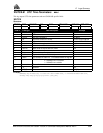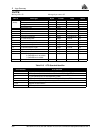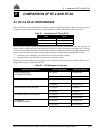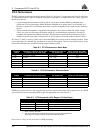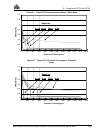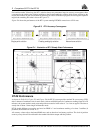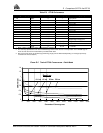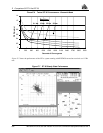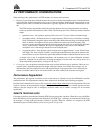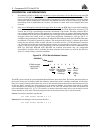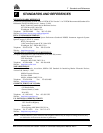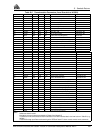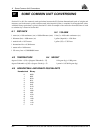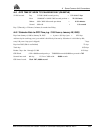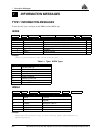
E Comparison Of RT-2 And RT-20
MiLLennium GPSCard SW Version 4.503/4.52 Command Descriptions Manual Rev 2 237
E.2 PERFORMANCE CONSIDERATIONS
When referring to the “performance” of RTK software, two factors are introduced:
1. Baseline length: the position estimate becomes less precise as the baseline length increases. Note that the base-
line length is the distance between the phase centres of the two antennas. Identifying the exact position of your
antenna’s phase centre is essential; this information is typically supplied by the antenna’s manufacturer or ven-
dor.
The RTK software automatically makes the transition between short and longer baselines, but the best
results are obtained for baselines less than 10 km. The following are factors which are related to baseline
length:
• ephemeris errors - these produce typical position errors of 0.75 cm per 10 km of baseline length.
• ionospheric effects - the dominant error for single-frequency GPS receivers on baselines exceeding
10 km. Differential ionospheric effects reach their peak at dusk and dawn, being at a minimum during
hours of darkness. Ionospheric effects can be estimated and removed on dual-frequency GPS
receivers, greatly increasing the permissible baseline length, but at the cost of introducing additional
“noise” to the solution. Therefore, this type of compensation is only used in cases where the
ionospheric error is much larger than the noise and multipath error.
• tropospheric effects - these produce typical position errors of approximately 1 cm per 10 km of base-
line length. This error increases if there is a significant height difference between the reference and
remote stations, as well as if there are significantly different weather conditions between the two sites.
A related issue is that of multipath interference, the dominant error on short differential baselines.
Generally, multipath can be reduced by choosing the antenna’s location with care, and by the use of a
choke-ring antenna ground plane, see Appendix B, Page 75.
2. Convergence time: the position estimate becomes more accurate and more precise with time. However, con-
vergence time is dependent upon baseline length: while good results are available after a minute or so for
short baselines, the time required increases with baseline length. Convergence time is also affected by the
number of satellites which can be used in the solution: the more satellites, the faster the convergence.
Performance Degradation
The performance will degrade if satellites are lost at the remote or if breaks occur in the differential correction
transmission link. The degradations related to these situations are described in the following paragraphs.
Provided lock is maintained on at least 4 SVs and steady state has been achieved
, the only degradation will be the
result of a decrease in the geometrical strength of the observed satellite constellation. If steady state has not been
achieved, then the length of time to ambiguity resolution under only 4-satellite coverage will be increased
significantly.
REMOTE TRACKING LOSS
If less than 4 satellites are maintained, then the RTK filter can not produce a position. When this occurs, the POSA/
B and P20A/B logs will be generated with differential (if RTCM Type 1 messages are transmitted with the Type
59 messages) or single point pseudorange solutions if possible. When the satellites are reacquired, the RTK
initialization process described below occurs (see Figure E-8, Page 238).



